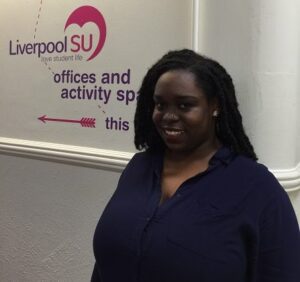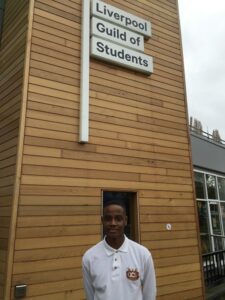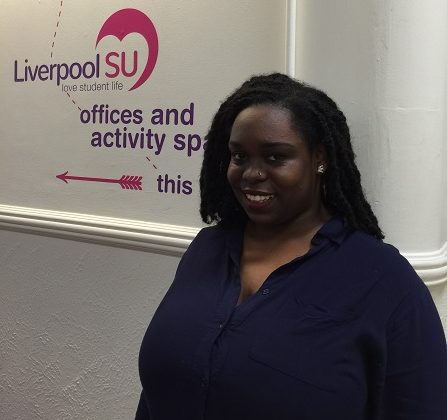
A student leader at Liverpool John Moores University has expressed concern over the city’s ability to tackle the under-representation of black and minority ethnicities.
Lorraine Sebastian-Francois, the university’s President of the Students’ Union, LiverpoolSU, said there were “massively low numbers of black and minority ethnic (BME) students within the university, meaning that BME students are being underrepresented”.
Ms Sebastian-Francois also believes that Liverpool is not sufficiently culturally diverse and that Liverpool City Council should do a lot more than it is with its current BME population.
According to the Office for National Statistics (ONS) 2011 Census data, a total of 1,865,000 (15%) of people who are both UK and non-UK born define themselves as BME. In the North-West of England, the ONS recorded that the population of BME residents is 26,109 people (1.4%).
From using Freedom of Information requests, JMU Journalism can reveal the number of Black, African, Caribbean and Black British undergraduates who enrolled at Liverpool John Moores University and University of Liverpool from September 2010/2011 to 2014/2015.
The figures show LJMU had a higher BME count in comparison to University of Liverpool at undergraduate level during the five-year period, as 3.47% of the overall 83,896 undergraduates who enrolled at LJMU were BME students.
However, from the 82,478 students who enrolled at University of Liverpool, only 3.35% of students were under the BME classification.
Ms Sebastian-Francois, who is African-Caribbean and from Northamptonshire, graduated from LJMU in 2014 before joining office at the LiverpoolSU.
The 24-year-old told JMU Journalism: “There is a stigma about the North of England being stuck in the ’80s vibe, it doesn’t feel like a very welcoming place for people of colour to go to. Lots of BME students would rather stay around their own home communities.
“This issue is also outside the university’s doors, it is within the city of Liverpool. I think the demographics for the university and BME students probably reflects the whole of the city, which shows that it attracts certain types of people and one not being of minority ethnicities.”
The BME undergraduate count for both universities does, however, show an enrolment increase during the five-years, most notably the University of Liverpool in BME numbers from 2.78% in 2010/2011 to 3.82% in 2014/2015.
LJMU had an average of a 3.47% rise with its BME count, from 2010/2011 (3.41%) to 2014/2015 (3.92%).

The Liverpool Business School had the highest record of BME students than any other LJMU School, comprising 407 undergraduates. The University of Liverpool’s most favourable degree among its BME student population was Medicine and Surgery at 403.
University of Liverpool student Darryn Nyatanga, who was born in Zimbabwe and now lives in Milton Keynes, studies Law and Politics and is also the President of the Liverpool Afro-Caribbean Society.
The 19-year-old told JMU Journalism: “I do not think the ‘stigma’ even exists when you come to this city, I have not experienced any racism during my time in Liverpool.
“I do think the best way to solve this issue is to erase this so-called ‘stigma’ by trying to be more open to BMEs but at the same time not letting the chances of discrimination rise from other non-BME students.”
A University of Liverpool spokesperson told JMU Journalism: “The university is committed to providing an environment which recognises and values people’s differences, capitalises on the strengths that those differences bring to the institution and supports all staff and students in maximising their potential to succeed.”
LJMU said: “We are committed to promoting equal opportunities for all those involved within the university’s community. Over the years, LJMU has raised awareness and introduced positive equal opportunities strategies with regard to our diverse student population.”
Liverpool City Council did not wish to give comment.

